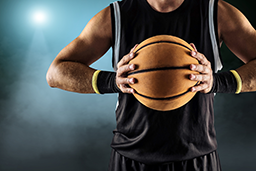Eight million dollars. That’s the mind-bending potential value of an NIL deal recently signed by a 2023 five-star football recruit—a kid still in high school who’s now positioned to join the seven-figure club by the time he’s a college senior.
NIL deals were also front and center during March Madness. Several men’s and women’s basketball players participating in the tournament were endorsing footwear, apparel and the like in exchange for big bucks.
But this should come as no surprise. Last year, new state laws and NCAA rule changes dramatically shifted the landscape of college sports by allowing athletes to cash in by selling their name, image and likeness (NIL) rights. With that, more than a few student-athletes are now flush with cash, which is great for those reaping the benefits of endorsement and promotional agreements. Still, NIL mania is creating real problems in terms of athletic recruiting and is upsetting the balance of power in college sports programs nationwide.
It's Tough to Compete With the Almighty Dollar
According to several Power 5 conference coaches, recruiting strategies pale in comparison to the availability of NIL opportunities. This explains the surge of donor-led collectives that are exploiting NIL rules and playing havoc with the ability of some universities to attract players to their schools, especially through the advent of the transfer portals, which allow student-athletes to freely transfer between schools without losing a year of eligibility
These collectives are funded by boosters and businesses that pool resources to lure student-athletes looking to monetize their personal brands with NIL deals. Between collectives, which are technically independent of universities, and local media markets, certain colleges, depending on their location and popularity, are essentially able to buy players—and given the NCAA’s relatively recent about-face on the sale of NIL rights, they can do so legally.
Human nature dictates that recruits will flock to the conferences and universities offering the greatest money-making opportunities. This reality hasn’t been lost on administrators, with athletic departments across the country now working to educate, engage and entice athletes with the specter of NIL paydays. This includes the creation of the aforementioned collectives that are committing millions to the cause.
Anything to Stay Competitive
In light of the new economics informing athletes’ college decisions, schools are getting rather creative, even beyond collectives. Some, like Oregon State and the University of Nebraska, are creating NIL marketplaces, platforms where businesses can access students and offer NIL opportunities. For their part, interested athletes can leverage marketplace technology to create profiles so that third-parties can contact, pitch and (ultimately) pay them. This is over and above the work brands are doing to connect directly with student-athletes for paid endorsements and other NIL arrangements. No matter the vehicle used to promote the promise of NIL riches, there can be no doubt that the collegiate playing field is no longer a level one, as universities and their boosters are looking for new ways to entice top talent to their athletic programs.
NIL-Related Legal Disputes on the Horizon
While some are lining their pockets in a big way, many other student-athletes are certainly being taken advantage of, with some likely signing away the exclusive rights to their NIL. Not only that, it’s inevitable that a share of NIL deals, big and small, will go south. And to make matters even worse, there’s an overwhelming lack of federal guidelines in place to protect the kids being hounded for their NIL rights. Parenthetically, the unregulated NIL marketplace will reach a tipping point at some point that’ll leave the NCAA and the federal government scrambling to enact protections for student-athletes and the very integrity of collegiate athletics.
Along with these potential problems, and the lawsuits that may eventually accompany them, comes a perceived lack of financial literacy on the part of those earning significant sums of money for the first time. The tax filing deadline is just days behind us, but how many student-athletes understand their tax liabilities, let alone what to do with a 1099? Bottom line: a flurry of disputes stemming from NIL agreements—tax-related or otherwise—are a virtual certainty.
Without question, NILs are turning the college sports world upside down. And to think we’re just in the infancy of the NIL frenzy. Watch this space.
This blog post is not offered, and should not be relied on, as legal advice. You should consult an attorney for advice in specific situations.

